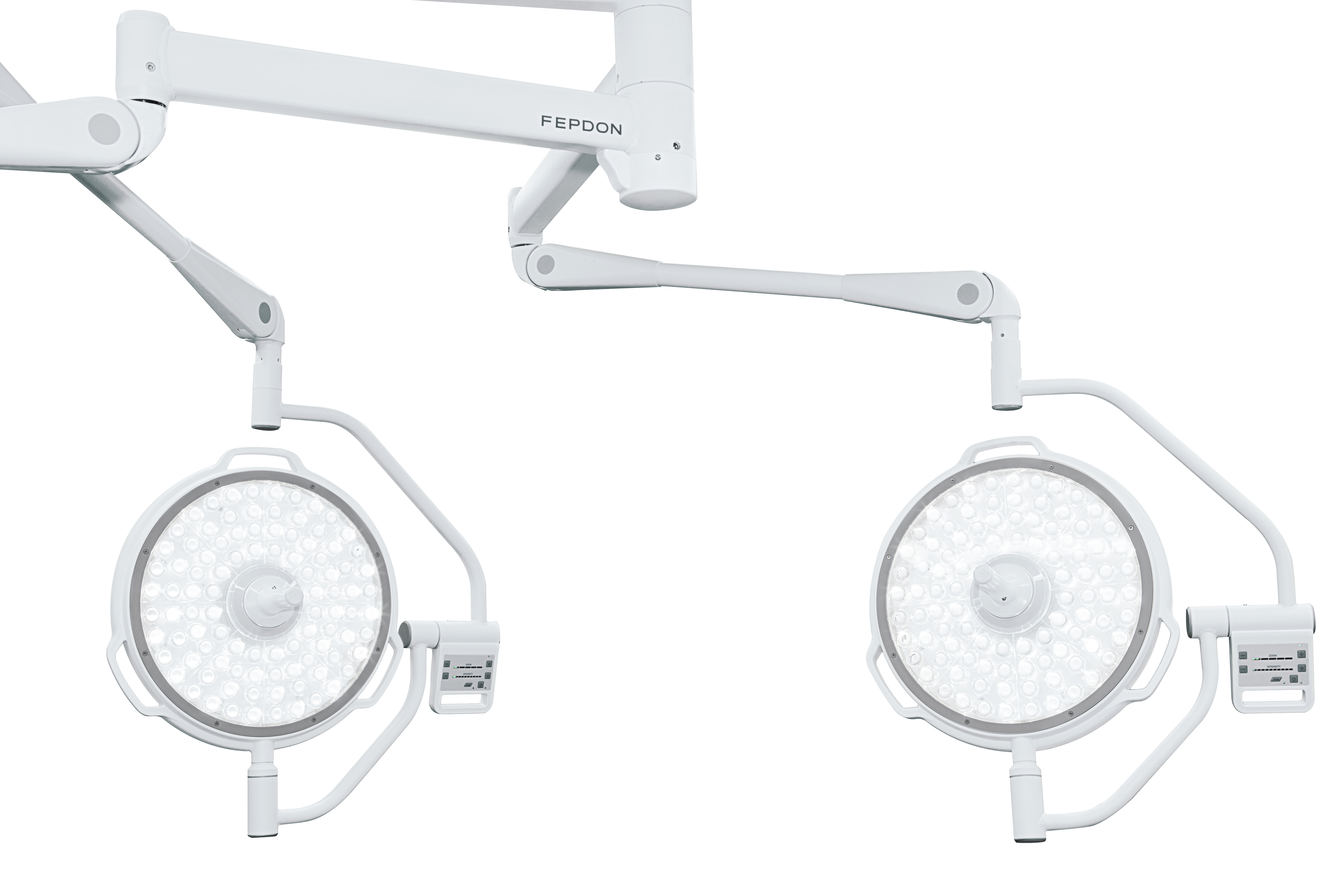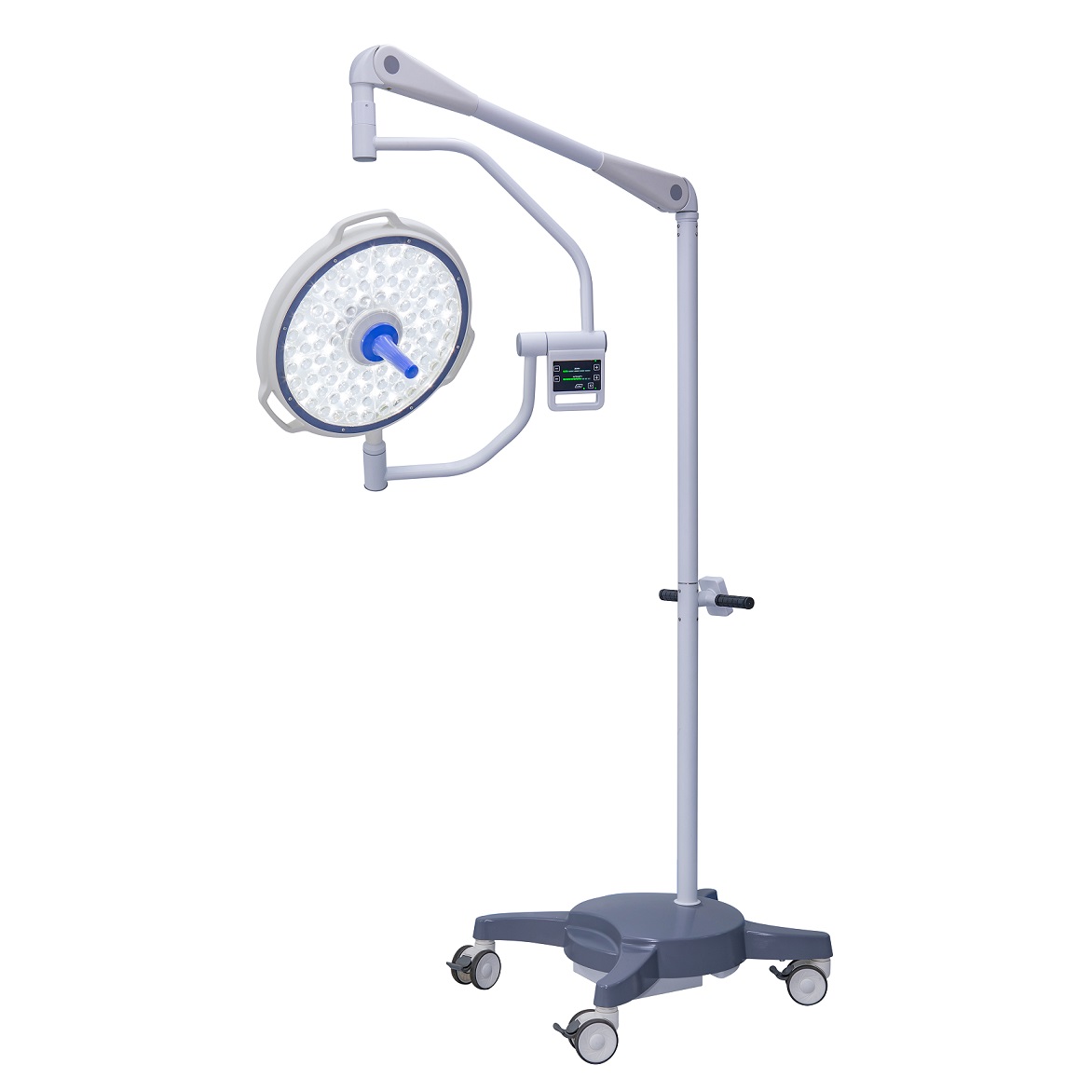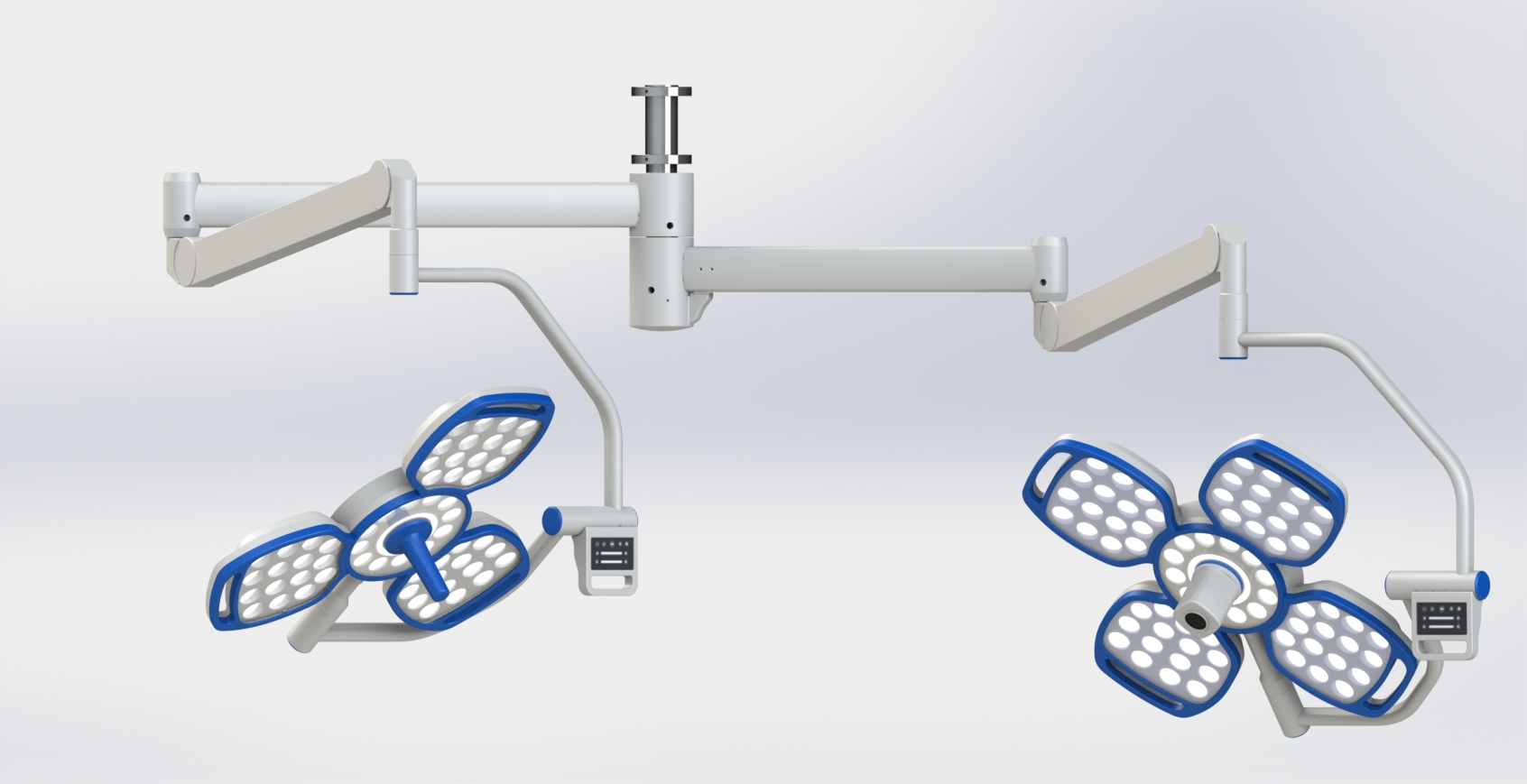Surgical shadowless lamps are used to illuminate the surgical site to best observe small, low-contrast objects at different depths in the incision and body control. Since the head, hands and instruments of the operator may cause interference shadows on the surgical site, the surgical shadowless lamp should be designed to eliminate shadows as much as possible and minimize color distortion. In addition, the shadowless lamp must be able to work continuously for a long time without radiating excessive heat, because overheating will make the operator uncomfortable and dry the tissue in the surgical area.
Surgical shadowless lamps are generally composed of single or multiple lamp caps, which are fixed on a cantilever and can move vertically or cyclically. The cantilever is usually connected to a fixed coupler and can rotate around it. The shadowless lamp uses a sterilizable handle or a sterile hoop (curved track) for flexible positioning, and has an automatic brake and stop function to control its positioning. It maintains a suitable space on and around the surgical site. The fixed device of the shadowless lamp can be installed on the fixed point on the ceiling or the wall, and can also be installed on the track of the ceiling.
For shadowless lamps installed on the ceiling, one or more transformers should be installed in the remote control box on the ceiling or wall to convert the input power supply voltage into the low voltage required by most light bulbs. Most shadowless lamps have a dimming controller, and some products can also adjust the range of the light field to reduce the light around the surgical site (the reflections and flashes from bed sheets, gauze or instruments can make the eyes uncomfortable).

Why is the shadowless lamp “no shadow”?
Shadows are formed by light shining objects. The shadows are different everywhere on the earth. If you carefully observe the shadow under the electric light, you will find that the middle of the shadow is particularly dark, and the surroundings are slightly shallow. The particularly dark part in the middle of the shadow is called the umbra, and the dark part around it is called the penumbra. The occurrence of these phenomena is closely related to the linear propagation of light. If you put a cylindrical tea caddy on the table and light a candle next to it, the tea caddy will cast a clear shadow. If two candles are lit next to the tea canister, two overlapping shadows will be formed. The overlapping part of the two shadows has no light at all, and it is completely black. This is the umbra; the place where there is only a candle next to the umbra is half-bright and half-dark. If you light three or even four candles, the umbra will gradually shrink, and the penumbra will have many layers. Objects can generate shadows composed of umbra and penumbra under electric light, which is also the reason. Obviously, the larger the area of the luminous object, the smaller the umbra. If we light a circle of candles around the tea caddy, the umbra disappears completely and the penumbra is too faint to see. Scientists made a shadowless lamp for surgery based on the above principles. It arranges the lamps with high luminous intensity into a circle on the lamp panel to form a large-area light source. In this way, light can be irradiated on the operating table from different angles, which not only ensures that the surgical field has sufficient brightness, but also does not produce obvious umbra, so it is called a shadowless lamp.
Post time: Sep-18-2021


